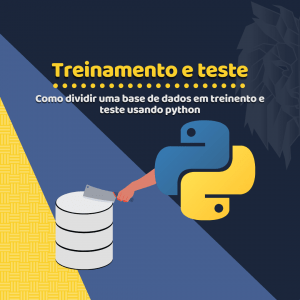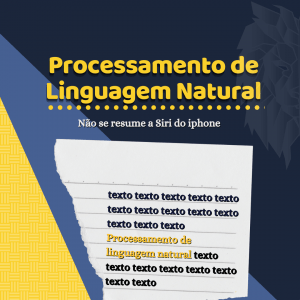Nessa aula iremos compreender como analisar os sentimentos em tweets utilizando python e um classificador sentimentos treinado na ultima aula. Para isso, iremos utilizar a API tweepy para minerar (extrair) esses tweets da base de dados do Twitter. Assim, poderemos fazer uma conexão com o twitter dar ao programador a possibilidade de manipular os tweets com maior facilidade.
Usando a API no python
O primeiro passo para analisar sentimentos em python é utilizar a API tweepy é importar a biblioteca (já instalada via pip install tweepy). Além disso, vamos importar algumas bibliotecas que iremos utilizar nesse projeto.
import tweepy
import re
import pickle
from tweepy import OAuthHandler
Assim como foi descrito na aula de introdução você deverá inicializar os tokens. Para isso você deve acessar a plataforma do twitter para desenvolvedores, criar uma nova conta, ler e aceitar todos os termos e solicitar uma nova chave de acesso.
# initializing the keys
consumer_key = '__colocar sua consumer key___'
consumer_secret = '___ colocar sua consumer secret___'
access_token = '___colocar seu access token___'
access_secret = '___colocar seu access secret___'Passo 03 – A seguir, você deverá utilizar o objeto OAuthHandler e passar os tokens para autenticar na API. Na lista de args, você deverá passar o termo no qual você está buscando em tweets.
auth = OAuthHandler(consumer_key,consumer_secret)
auth.set_access_token(access_token,access_secret)
args = ['league of legends']
api = tweepy.API(auth,timeout=10)Em seguida você poderá carregar os tweets em uma lista:
list_tweets = []
query = args[0]
if len(args) == 1:
for status in tweepy.Cursor(api.search, q=query + ' -filter:retweets', lang='en', result_type='recent').items(100):
list_tweets.append(status.text)
Para classificar um tweet vamos precisar de um classificador treinado, se você não sabe como fazer isso veja nosso post sobre como treinar classificadores em python. Mas lembre-se, que para que esse código funcione, você vai precisar de um corpus anotado e que seja capaz de identificar sentimentos em textos similares a tweets.
# aqui fazemos a abertura do nosso vetorizador
with open('tfidfmodel.pickle', 'rb') as f:
vectorizer = pickle.load(f)
# aqui fazemos a abertura do classificador
with open('classifier.pickle', 'rb') as f:
clf = pickle.load(f)
resultado = clf.predict(vectorizer.transform(['we are awesome']))
print (resultado)Por fim, realizamos o pré-processamento de cada tweet e classificamos o tweet utilizando o classificador treinado.
# pré processamento
for tweet in list_tweets:
tweet = re.sub(r"^https://t.co/[a-zA-Z0-9]*s", " ", tweet)
tweet = re.sub(r"s+https://t.co/[a-zA-Z0-9]*s", " ", tweet)
tweet = re.sub(r"s+https://t.co/[a-zA-Z0-9]*$", " ", tweet)
tweet = tweet.lower()
tweet = re.sub(r"that's", "that is", tweet)
tweet = re.sub(r"what's", "what is", tweet)
tweet = re.sub(r"where's", "where is", tweet)
tweet = re.sub(r"it's", "it is", tweet)
tweet = re.sub(r"who's", "who is", tweet)
tweet = re.sub(r"i'm", "i am", tweet)
tweet = re.sub(r"she's", "she is", tweet)
tweet = re.sub(r"he's", "he is", tweet)
tweet = re.sub(r"they're", "they are", tweet)
tweet = re.sub(r"who're", "who are", tweet)
tweet = re.sub(r"ain't", "am not", tweet)
tweet = re.sub(r"wouldn't", "should not", tweet)
tweet = re.sub(r"can't", "can not", tweet)
tweet = re.sub(r"couldn't", "could not", tweet)
tweet = re.sub(r"won't", "will not", tweet)
tweet = re.sub(r"W", " ", tweet)
tweet = re.sub(r"d", " ", tweet)
tweet = re.sub(r"s+[a-z]s+", " ", tweet)
tweet = re.sub(r"s+[a-z]$", " ", tweet)
tweet = re.sub(r"^[a-z]s+", " ", tweet)
tweet = re.sub(r"s", " ", tweet)
sent = clf.predict(vectorizer.transform([tweet]))
print(tweet, ":", sent, "n")
Ao fim teremos o output (considerando que [1] – positivo – [0] – negativo):
added video to youtube playlist zedd ignite worlds league of legends : [0]
added video to youtube playlist legends never die ft against the current worlds league of : [0]
added video to youtube playlist imagine dragons warriors worlds league of legends : [0]
liked youtube video uzay serüveni modu league of legends gameplay : [0]
live league of legends mundial fase de entrada dia via youtube : [0]
liked youtube video league of legends diamond iv yuhuhuhu facem si noi likeuri : [0]
shaian we re updating the emblems because they don fit the aesthetic of league of legends or the world of ru : [1]
li league of legends makes me really pissed off lot but the game itself isn the problem it is assholes and : [0]
looking for some people who want to play league of legends with me just for fun am terrible but would like to play with group : [1]
liked youtube video rise ft the glitch mob mako and the word alive worlds league of legends : [0]
new ryze skin spotlight pre release league of legends thanks riotgames : [1]
the permanent ban turned out to be not so permanent here the story of loltyler road to league of legends red : [0]
dia league of legends : [0]
liked youtube video pulsefire ezreal skin spotlight pre release league of legends : [0]
intersting structure developments : [1]
A análise de sentimentos hoje é um assunto bastante difundido na comunidade de data science e principalmente entre os estudiosos de processamento de linguagem natural. Ela não representa um grande desafio, porém, pode ser uma ferramenta interessante para os gestores de grandes empresas e cientistas de dados.
É preciso lembrar também que o treinamento do modelo influencia muito nos resultados, sendo assim, preste muita atenção nos dados que são utilizados e também como eles foram anotados.





